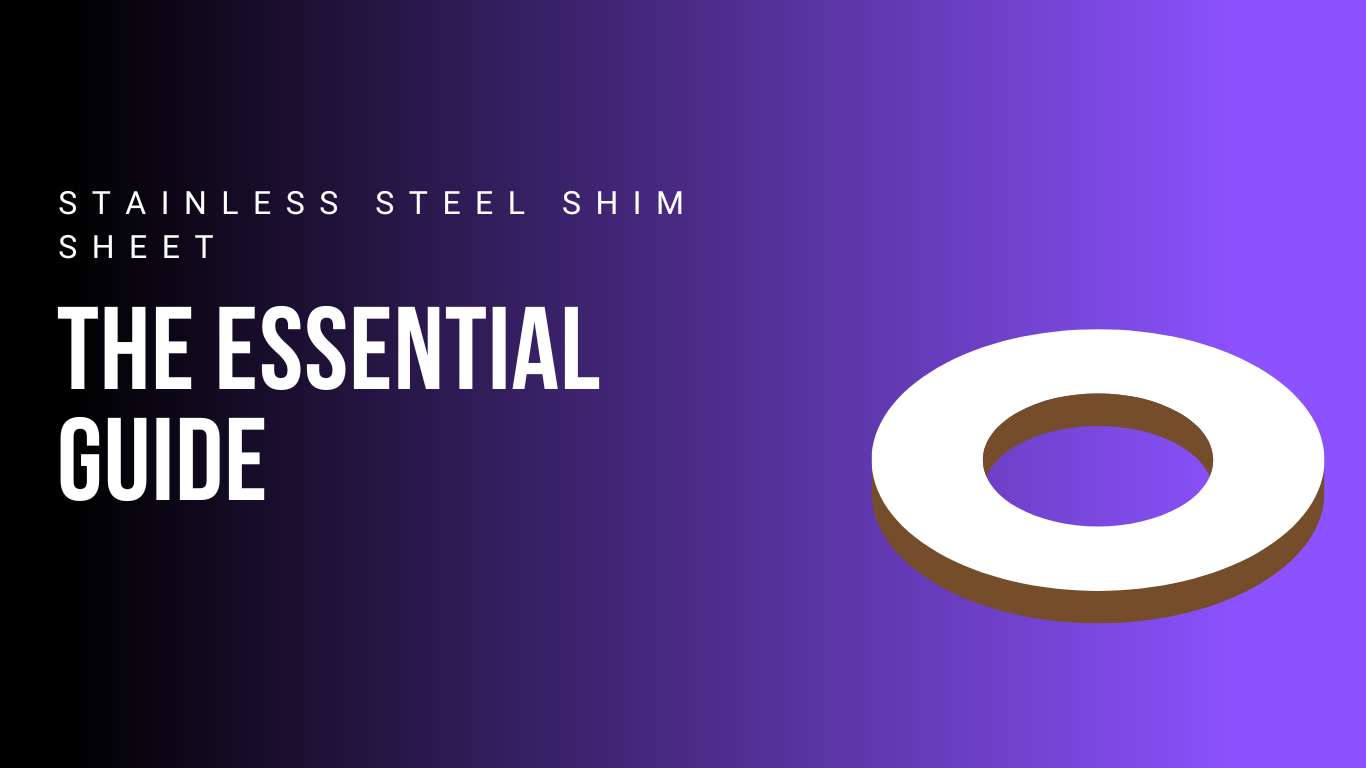
Stainless steel shims, also known as shim sheets, metal shims, or stainless steel shim stock, are thin, flat pieces of stainless steel used for various industrial and engineering applications. These versatile components play a crucial role in achieving precise alignment, maintaining spacing, and providing structural support in machinery, equipment, and even buildings. This essential guide delves into the world of stainless steel shims, exploring their properties, benefits, applications, and selection factors to empower you to make informed choices for your projects.
At their core, stainless steel shims are thin sheets of stainless steel, typically ranging in thickness from a mere 0.001 inches (0.025 mm) to 0.125 inches (3.175 mm). These precision stainless steel shim sheets come in various widths and lengths to cater to a multitude of requirements. The exceptional properties of stainless steel make them the ideal material for shim applications:
Stainless steel possesses inherent strength, allowing shims to withstand significant loads and maintain their shape over time. This is crucial for industrial-grade stainless steel shim sheets used in heavy-duty machinery.
The chromium content in stainless steel grants it superior resistance to rust and corrosion, making it a perfect choice for applications exposed to harsh environments. Corrosion-resistant stainless steel shim sheets are vital in marine, chemical processing, and other settings prone to corrosive elements.
Many grades of stainless steel can withstand high and low temperatures without compromising their integrity. This makes them suitable for applications requiring heat-resistant stainless steel shim sheets for extreme environments.
Stainless steel offers good formability, allowing for bending and shaping as needed. Additionally, it can be easily cut and machined to achieve specific dimensions, making it ideal for custom-sized stainless steel shim sheets.
The advantages of using stainless steel shims extend far beyond their primary function of filling gaps and providing spacing. Here's a closer look at the value they bring to various applications:
Thin stainless steel shim sheets enable precise adjustments in machinery and equipment, ensuring optimal performance and minimizing wear and tear.
Shims help maintain critical tolerances within assemblies, preventing parts from becoming too loose or tight, thereby enhancing functionality and longevity.
Stainless steel shims can be used to level uneven surfaces and create a stable base for equipment or structures.
By absorbing vibrations, shims can contribute to smoother operation and reduce noise in machinery.
Certain grades of stainless steel offer electromagnetic interference (EMI) and radio frequency interference (RFI) shielding properties, making them valuable in electronic applications.
The versatility of stainless steel shims makes them applicable across a wide range of industries and projects. Here are some prominent examples:
Stainless steel shim sheets for electronics are used for EMI/RFI shielding, component spacing, and heat dissipation in circuit boards and other electronic devices.
High-quality stainless steel shims for machinery are employed to ensure precise alignment of bearings, shafts, and other moving parts. They also find use in vibration dampening and maintaining proper tolerances within assemblies.
Stainless steel shims play a role in leveling uneven surfaces, creating space for expansion and contraction, and ensuring proper door and window alignment in buildings.
Stainless steel shim sheets for aerospace applications are used in critical aircraft components due to their lightweight yet high-strength properties and excellent corrosion resistance.
From engine gaskets and body panel spacers to adjusting valve clearances, stainless steel shims are essential components in various automotive applications.
With the multitude of benefits and applications of stainless steel shims comes the crucial task of choosing the right type for your specific needs. Here are some key factors to consider:
Different grades of stainless steel offer varying levels of corrosion resistance, strength, and formability. Common grades used for shims include 301, 302, 304, and 316. Grade 304 is a popular choice for its good balance of properties, while 316 offers superior corrosion resistance for demanding environments.
The thickness of the shim sheet directly impacts its functionality. Thin stainless steel shim sheets are ideal for fine adjustments, while thicker shims provide greater structural support for heavier loads. Consider the gap you need to fill and the level of support required when selecting thickness.
Temper refers to the hardness and springiness of the material. Shims are typically available in a half-hard temper (H) offering a good balance between formability and rigidity. For applications requiring a more rigid shim, a full-hard temper (FH) may be suitable.
Stainless steel shims come in various standard sizes (width and length). You can also find custom-sized stainless steel shim sheets from certain suppliers to meet your specific project requirements. Consider the space you need to fill and any bending or shaping needed when determining the ideal size and shape.
The surface finish of the shim can impact its performance in certain applications. A smooth finish is preferred for applications requiring close contact with other components, while a textured finish might be desirable for improved grip in specific situations.
Stainless steel shim prices can vary depending on the grade, thickness, size, and supplier. Consider your project requirements and balance them with your budget while making your selection.
Lead times for certain grades, thicknesses, or custom sizes may vary. Ensure the chosen shim is readily available to meet your project timeline.
By carefully considering these factors, you can ensure you select the most suitable stainless steel shim for your application, maximizing its effectiveness and contributing to the success of your project.
Stainless steel shims, despite their simple form, offer a powerful and versatile solution for various industrial and engineering needs. Their inherent strength, corrosion resistance, and ease of use make them a reliable choice for achieving precise alignment, maintaining tolerances, and enhancing the functionality and longevity of equipment and structures. By understanding the properties, benefits, applications, and selection factors of stainless steel shims, you are empowered to make informed decisions and leverage their value in your projects. So, the next time you encounter a gap that needs filling, a component needing adjustment, or a need for precise alignment, remember the enduring value of the humble stainless steel shim.
Our range of shims includes metal, machine, industrial, precision, adjustable, machinery, engineering, custom, and alignment shims. These shims are designed for various applications, such as machinery alignment, fine adjustments in industrial-grade machines, engineering projects requiring steel shims, heavy-duty machinery requiring versatile metal shims, aerospace applications demanding precision stainless steel shims, automotive use requiring adjustable aluminum shims, precision engineering projects using high-quality brass shims, construction applications requiring durable plastic shims, specialized machinery needing customized shim solutions, and manufacturing processes requiring fine-tuning shims for precise alignment and accurate machine setup and leveling.



